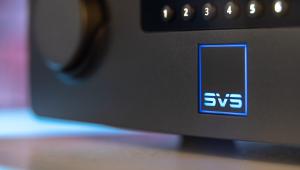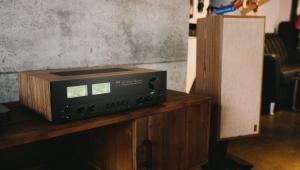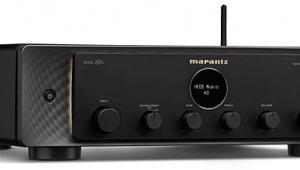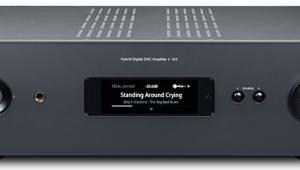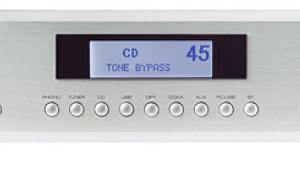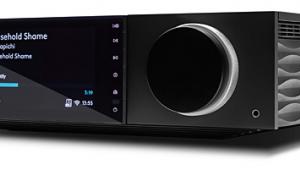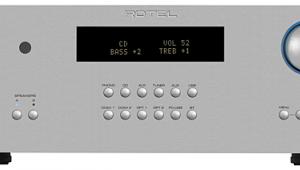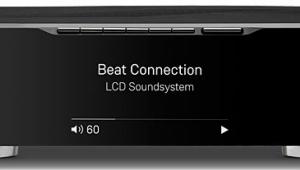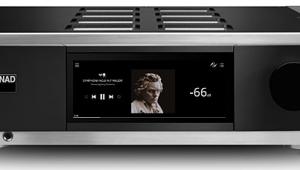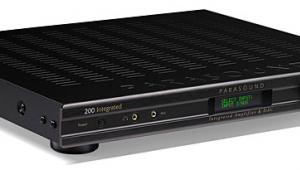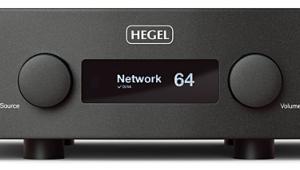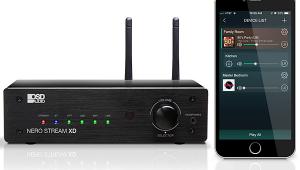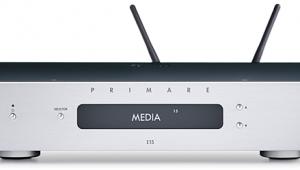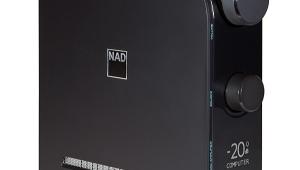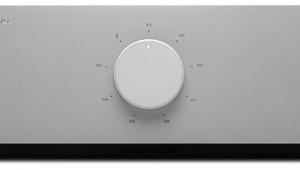Micromega M-150 Integrated Amplifier Review Page 2
As is my usual practice, I performed the bulk of my listening without Micromega’s room correction in force, and for my usual reason; such corrections are entirely subject to the room (duh!), and the speakers in use. That said, here’s what I found. M.A.R.S. setup is straightforward. After plugging the supplied mike into a rear-panel socket, you proceed to run sweeps for middle, left, and right positions, the latter flanking the central, head-height one by 8 inches or so. (Micro- mega thoughtfully supplies a mini-tripod for your convenience.) There’s no remote control access for this, so you have to traipse back to the front panel for each user-input—mildly annoying, but no big deal.
With calibration complete, you have three options: REQ-Auto only corrects low-frequency errors, presumably all or mostly room-mode in origin; Flat endeavors to correct higher-up anomalies (up to an unspecified frequency) of speaker response; and Off does what it says.
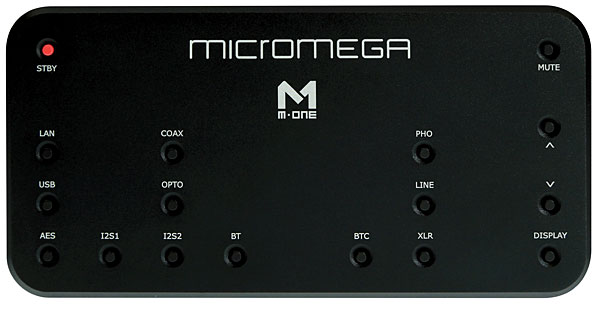
What I heard, starting from the Auto setting, was mostly the same as what I’ve heard from other competent room-correction systems: a slight tightening and “quickening” of stronger bass elements, like the nice round-wound Fender bass sound of the Richards album, which became somehow both more solid and better-defined. The Flat setting added in a very subtle tightening—perhaps “focusing” would be a better term—of imaging elements like pick-attacks and hi-hats. (Since my speakers in my room are, as far as I’ve been able to both hear and measure, quite close to flat above 200 Hz or so to begin with, this distinction was subtle indeed.) In both cases, net results seemed perhaps a bit less pronounced than what I’ve heard from familiar systems like Audyssey’s MultEQ. On balance, I rate Micromega’s M.A.R.S. as a very competent, and potentially useful, example of the breed.
Ergonomics
The M-150’s human factors couldn’t match its sonic excellence, though that in no degree lessened it. The front-panel display and controls are, as mentioned, less than friendly by my modern-day, onscreen-centric standards, but the supplied remote, with its generously spaced physical keys, supplies the basics of direct-access input selection and volume/mute control.
A free Micromega iOS/Android app duplicates these controls and adds the M-150’s limited on-board streaming features, comprising internet radio and server functions. Curiously, there’s no Mute function anywhere in the app, so if you need to kill the sound and happen to be deep into the streaming or radio pages, you have to navigate back to the Remote page, which could be three or four swipes, and then slide the volume lower. Oversight!
The Audio Server pages similarly present a common basic structure: Album, All Tracks, Artist, and Composer access points, including Playlists reflected from an iTunes library, but including a Folder for non-library material, which is where my hi-res files live. Streaming, via my Mac’s TwonkyMedia DLNA server, worked seamlessly—once I’d eliminated my hardware IP switch in favor of a direct-from-the-router Ethernet cable. (The switch induced severe streaming dropouts, something I’d not encountered when using the selfsame switch with a few dozen other streaming components over the years.)
Thus debugged, streaming audio sounded uniformly superb. My files include uncompressed AIFFs, FLACs, DSDs (including a few 5.6 MHz examples), and ALACs; all played smoothly and without a hiccough. Navigation was reasonably sprightly and ergonomically straightforward, though I never really uncovered the app’s Playlist functions (if any), nor any Search option.

A couple of odds and ends: The M-150 incorporates Bluetooth, with the better-quality aptX codec onboard. I also essayed the Micromega’s phono input—which can be set to moving magnet or moving coil gain via a rear-panel mini-switch—via my older-but- adequate Rega/Ortofon (MM) setup. It worked fine and sounded as excellent as everything else on the Micromega did. I also tried the M-150 subwoofer output though only to confirm operation.
Micromega’s materials state that the M-150’s front-panel headphone jack incorporates “binaural processing,” but at various other points refers to this as an option, and as “compatible with the binaural process.” I tried it and found sound that might have been a bit more forward-wrapped than usual, but not dramatically so. The M-150’s headphones output did not have enough voltage-swing to drive low-sensitivity cans like my planar HiFiman Edition-X, to head-banging levels, however. Loud, no problem, but loud-loud, nyet.
Conclusion
At the most basic, sonics-first level, the M-150 is a really good, digital-input integrated amplifier. A really, really, really good integrated amplifier: I could cheerfully listen to it as my only two-channel system until—or if—something better ever were to come along.
But, well, there are a number of “buts.” First, the lack of any access to onboard streaming services such as Tidal or Spotify may give pause to 21st-century audiophiles. (Micromega plans to implement Tidal in a future firmware update.) Ditto the lack of Wi-Fi and the absence of any onscreen interface.
But none of these will, nor should they, put off the dedicated audiophile in search of a truly compact, single-piece solution to the one task that matters: serious listening at the highest quality level. This the Micromega M-150 unquestionably delivers, though at a price.

